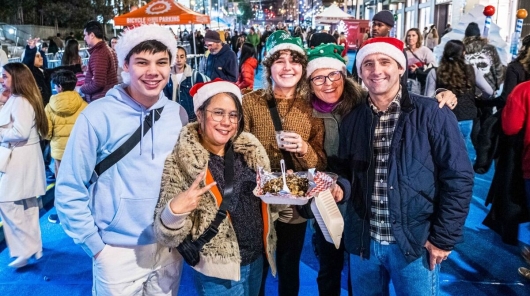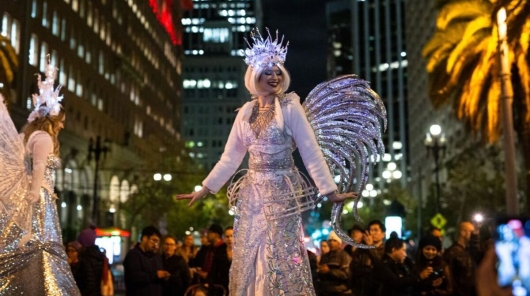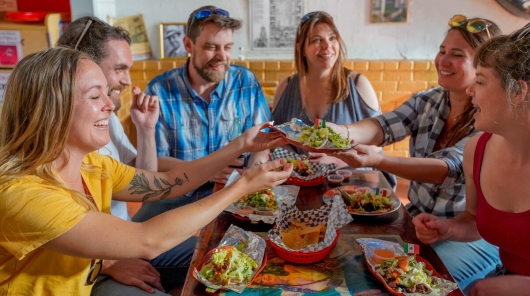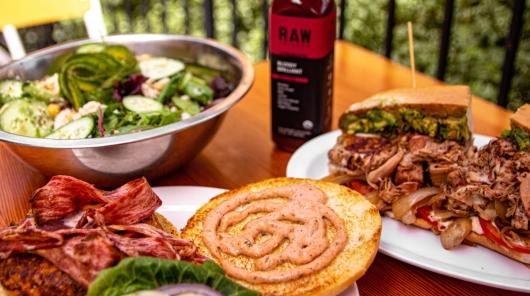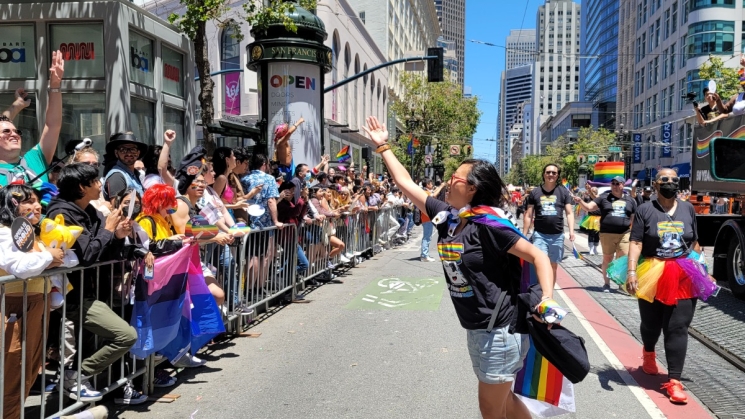
BART talks intersection of LGBTQ+ identity and public transit advocacy
The BART contingent at the 2022 San Francisco Pride Parade.
Alfred Twu recently noticed something when staring at the BART System Map. “If you look at it, the map just so happens to be a rainbow,” quipped Twu, a transit advocate and California Democratic Party delegate. Many of the most vocal supporters, leaders, and advocates for public transportation are also members of the LGBTQ+ community.
“Why are there connections between Community A and Community B? Much of it comes down to what you do, where you live, and how much money you have,” Twu said.
 Snapshots from the 2022 San Francisco Pride Parade.
Snapshots from the 2022 San Francisco Pride Parade.
There has long been an overlap between queerness and urbanism – and it should come as no surprise that that overlap is highly visible in the San Francisco Bay Area.
“There are a lot of different theories around this,” said BART Board President Janice Li, one of three current BART Board members who identify as LGBTQ+. “A big part of it is that queer people flock to cities, which makes sense. If you grew up LGBTQ+ in a rural community, it might not be a place you’re comfortable being out, the dating pool is probably tiny, and at the end of the day, cities are denser – there’s a greater likelihood that you’ll find a community with which you identify.”
Others interviewed for this story agreed that yes, LGBTQ+ people love transit because they often live in cities. But each person interviewed also had a portfolio of other illuminating theories.
For BART Board member Rebecca Saltzman, “It all comes down to intersectionality.”
“When you’re part of a community that has been historically oppressed in some way, I think there’s a natural inclination to want to advocate for other causes,” she said.
LGBTQ+ people have been at the forefront of many pivotal social justice movements in the U.S. and abroad, helping to lay the groundwork for the generations of activists who followed.
“Historically, as queer people in the Bay Area, we’ve had no choice but to be politically motivated,” said transit advocate Jon Wong. “It’s great we have all these progressive policies now, but that didn’t start in a vacuum.”
Wong cited a long list of LGBTQ-led protests and movements that paved the way for future movements, from the historic Compton’s Cafeteria riot in 1966 to Supervisor Harvey Milk taking his bullhorn to the streets of San Francisco.
 BART Board President Janice Li at the 2022 San Francisco Pride Parade.
BART Board President Janice Li at the 2022 San Francisco Pride Parade.
Jeffrey Tumlin, the first openly gay Director of Transportation of the SFMTA, has done quite a bit of thinking about transit advocacy and the LGBTQ+ community.
“Public transit is a really powerful tool that, by its nature, brings people together, and I think transit activism flows from that,” he said.
Tumlin drew a parallel between the act of riding transit and the act of existing in space as an LGBTQ+ person. Transit is a “little social island where we’re continually adjusting our behavior and creating new social rules,” he said. If you’re riding BART, for example, you’re likely asking yourself a series of questions you might not ask at home: Is my backpack in the way? Is my child making too much noise? Can anyone hear the music in my headphones?
“It’s on transit where we can figure out the intersection of being our true selves and being a person who might be accepted in society,” Tumlin said. “Every single bus ride is a practice run at that.”
 Snapshots from the 2022 San Francisco Pride Parade.
Snapshots from the 2022 San Francisco Pride Parade.
Alec Edges, a transit advocate and the Deputy Chair of Young Professionals in Transportation SF Bay Area, describes themself as an immigrant and queer person “who believes that a huge part of who they are is their ability to use public transportation.”
Edges said they used public transportation to get to school, to meet their partner, to travel to work, and to be with their chosen family.
“I have the option to walk outside my house, hop on BART and/or MUNI and go anywhere,” they said. “Public transit gives you that. It gives you the freedom of access, the freedom to be able to be who you are.”
For Board President Li, the“weird Venn Diagram of queer people and transit advocacy is one of joy.”
Li, who met her partner “through transit stuff,” understands that experiencing joy in community “touches another part of our beings.”
“We can give all the rational explanations, we can show you carbon emission statistics and traffic projections, we can constantly make the case for the importance of transit,” Li said. “But at the end of the day, what really matters is what pulls at our heart strings as humans.”
“Folks who have an irrational love and romanticization and joy when it comes to public transit – these are the stories we have to uplift, these are the people we have to engage, and these are the people who need to be the face of saving public transit,” she concluded.
